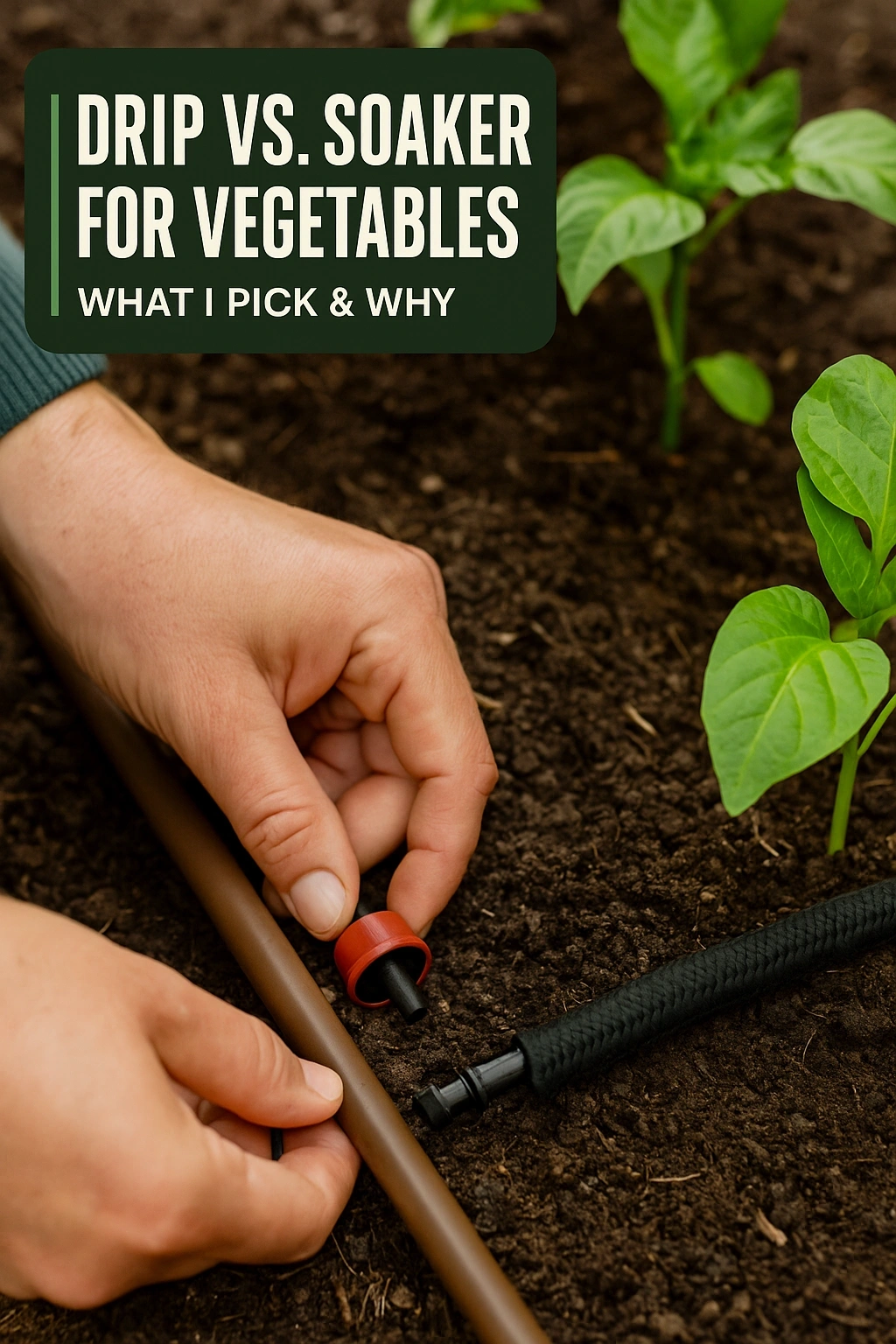
When it comes to watering vegetables, gardeners often find themselves choosing between two popular methods: drip irrigation and soaker hoses. Both systems have their own sets of advantages and disadvantages, making the decision challenging. This article explores the nuances of each method, helping you to decide which is the best fit for your vegetable garden. Understanding the pros and cons of drip and soaker irrigation can lead to healthier plants and a more efficient watering process.
What is Drip Irrigation?
Drip irrigation is a method that delivers water directly to the roots of plants through a system of tubes, pipes, and emitters. This technique allows for precise control over how much water each plant receives, minimizing waste and maximizing efficiency. It is particularly beneficial in areas where water conservation is a priority.
Benefits of Drip Irrigation
- Water Efficiency: Drip systems direct water to the plant roots, reducing evaporation and runoff.
- Targeted Nutrient Delivery: Fertilizers can be integrated into the system, providing nutrients directly where they are needed.
- Reduced Weed Growth: Since water is delivered only to the plants, surrounding weeds receive less moisture and may struggle to thrive.
- Minimized Disease Risk: By keeping foliage dry, the risk of fungal diseases and other waterborne issues is reduced.
Challenges of Drip Irrigation
- Initial Cost: Setting up a drip irrigation system can be more expensive than traditional methods.
- Maintenance: Emitters can clog, requiring regular checks and maintenance to ensure proper function.
- Complex Installation: Installation may require more planning and technical knowledge compared to simpler methods.
Exploring Soaker Hoses
Soaker hoses are porous hoses that allow water to seep out slowly along their length. They are laid out on the soil surface and primarily used to irrigate rows of plants or garden beds. This method is often favored for its simplicity and ease of use.
Advantages of Soaker Hoses
- Cost-Effective: Soaker hoses are generally less expensive to purchase and install compared to drip systems.
- Simplicity: They are easy to set up and require minimal technical knowledge.
- Versatility: Soaker hoses can be easily moved and adjusted based on changing plant growth and garden layouts.
Disadvantages of Soaker Hoses
- Water Distribution: Water may not reach the roots as effectively or evenly as with drip irrigation.
- Weed Growth: The moisture provided can encourage weed growth in areas not occupied by plants.
- Limited Control: Unlike drip systems, soaker hoses provide less control over the amount of water each plant receives.
Factors to Consider When Choosing Between Drip and Soaker
Choosing between drip irrigation and soaker hoses depends on several factors specific to your garden and gardening goals. Here are some critical considerations:
Garden Size and Layout
For small gardens or raised beds, soaker hoses may be sufficient and easier to manage. However, larger gardens with diverse plant types may benefit from the precision of a drip system.
Plant Types
Consider the water needs of the vegetables you are growing. Drip irrigation is ideal for plants that require consistent moisture, while soaker hoses can work well for less water-sensitive varieties.
Water Quality and Source
If your water source contains sediment or minerals, the clogging risk in drip systems may be higher. In such cases, soaker hoses may offer a more straightforward solution.
Budget and Resources
Evaluate your budget for initial setup and ongoing maintenance. If cost is a significant concern, soaker hoses can provide an effective solution without a hefty investment.
My Final Choice: A Personal Perspective
After careful consideration of the factors mentioned, I have opted for a combination of both systems in my vegetable garden. The drip irrigation system provides precision for my water-sensitive crops, while soaker hoses offer flexibility and ease for leafy greens and other less demanding plants. This dual approach allows me to maximize efficiency and yield.
FAQs
Which is more water-efficient: drip or soaker hoses?
Drip irrigation is generally more water-efficient because it delivers water directly to the roots, reducing evaporation and runoff. Soaker hoses can also be efficient but may lead to more water loss due to surface evaporation.
Can I use both drip and soaker hoses in my garden?
Yes, using both methods can be beneficial. You can tailor your irrigation approach based on the specific needs of different plants, ensuring optimal water delivery.
How often should I water my vegetables with drip or soaker systems?
The frequency of watering depends on several factors, including plant type, soil moisture, and weather conditions. Typically, vegetables may require watering every few days to once a week. Monitoring soil moisture can help determine the best schedule.
Are there specific vegetables that prefer one irrigation method over the other?
Yes, water-sensitive crops like tomatoes and peppers often thrive with drip irrigation, while root vegetables and leafy greens can do well with soaker hoses. Understanding the needs of your plants can guide your choice.
Can I install a drip or soaker system myself?
Both systems can be installed by homeowners with basic DIY skills. Drip irrigation may require more planning and knowledge, while soaker hoses are simpler to set up and adjust.
